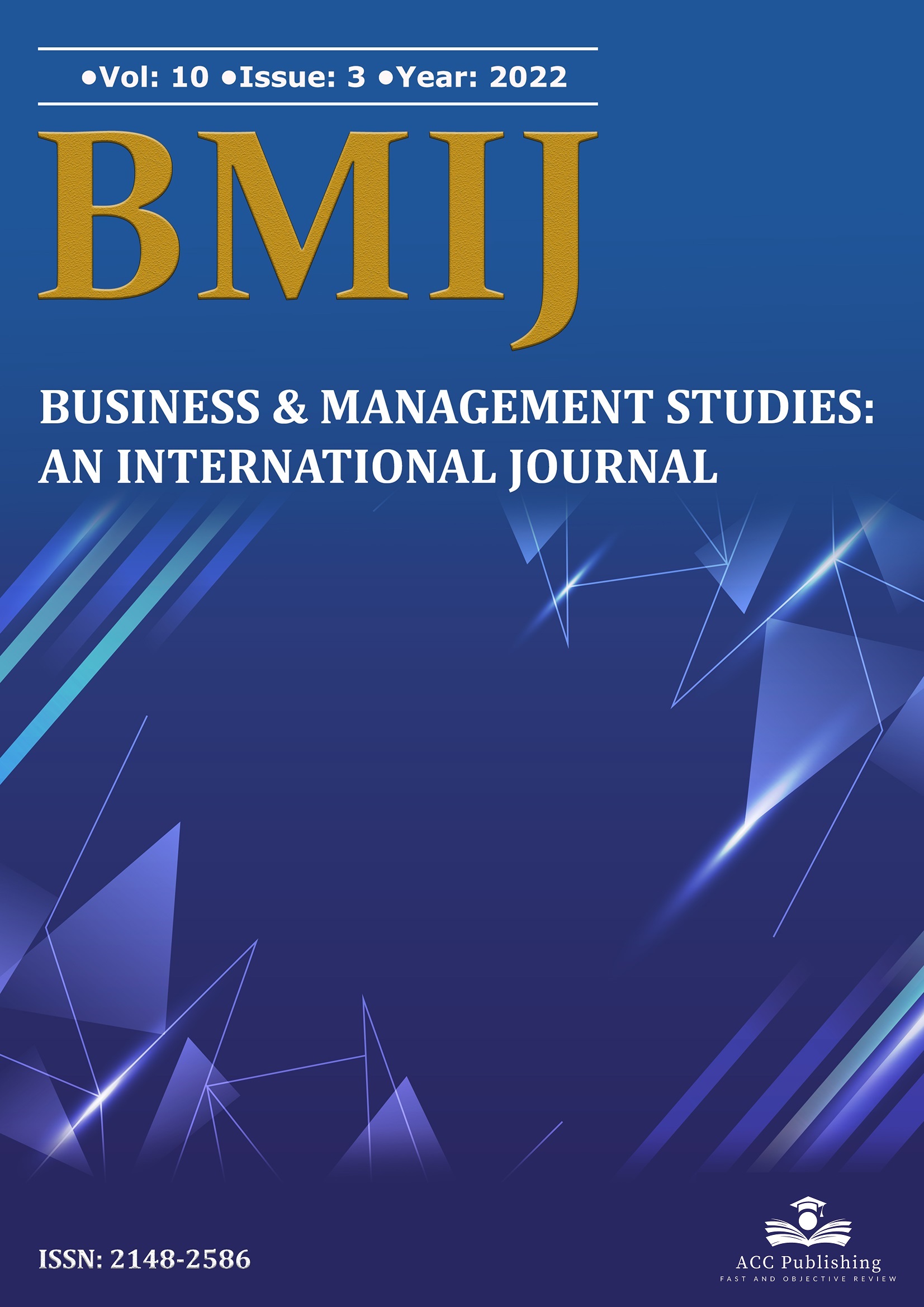
Published 2022-09-25
Keywords
- Cinsiyet İşsizliği, İşsizlik Histerisi, İşgücü Piyasası
- Gender Unemployment, Unemployment Hysteria, Labour Market
How to Cite
Copyright (c) 2022 Hasan AZAZİ

This work is licensed under a Creative Commons Attribution-NonCommercial-NoDerivatives 4.0 International License.
Abstract
Unemployment hysteria is when the unemployment rate increases due to economic fluctuation and does not return to its previous level after the fluctuation. The existence of unemployment hysteria is not a favourable situation for the labour market and necessitates regulatory intervention in the market. The study used female and male unemployment rates for January 2005 and May 2022 to investigate gender-based unemployment hysteria in Turkey. The Generalized Dickey-Fuller Unit Root Test, the Fourier Augmented Dickey-Fuller Unit Root Test, and the Phillips Perron Unit Root Test were used to investigate unemployment hysteria. The results from the unit root tests reveal that men have more unemployment hysteria than women in Turkey. Therefore, this situation is suggested to be considered in the regulations to be made in the labour market.
Downloads
References
- Akcan, A. T. (2019). Türkiye’de gençlerin işsizlik histerisi. Kastamonu Üniversitesi İktisadi ve İdari Bilimler Fakültesi Dergisi, 21(1), 31–47.
- Bayat, T., Kayhan, S., & Koçyiğit, A. (2013). Türkiye’de işsizliğin asimetrik davranışının rejim değişim modeliyle incelenmesi. Business and Economics Research Journal, 4(2), 79 90.
- Blanchard, O. & Lawrence S. (1986). Hysteresis and the european unemployment problem. NBER Working Paper Series, Working Paper No: 1950, 1-78.
- Çiçek, H., Gözegir, S. Çevik, E. (2010),. Bir maliye politikası aracı olarak borçlanma ve ekonomik büyüme ilişkisi: türkiye örneği. Cumhuriyet Üniversitesi İktisadi ve İdari Bilimler Dergisi, 11(1), 141-155.
- Çiçen, Y. B. (2020). Global krizde cinsiyet ve medeni duruma göre işsizlik histerisi: türkiye için fourier durağanlık analizi. Akademik Hassasiyetler, 7(13), 505–525.
- Dickey, D. & Fuller, W. (1979). Distribution of the estimators for autoregressive time series with a unit root. Journal Of The American Statistical Association, 74, 427 – 431.
- Dickey, D. & Fuller, W. (1981). Likelihood ratio statistics for autoregressive time series with a unit root. Econometrica, 49(4), 1057-1072.
- Erbay, T. (2016). Türkiye’de işsizliğin histeri etkisi. İstanbul Ticaret Üniversitesi Dış Ticaret Enstitüsü Tartışma Metinleri, WPS No 38, 1–12.
- Güloğlu, B. & İspir, M. (2011). Doğal işsizlik oranı mı? işsizlik histerisi mi?” türkiye için sektörel panel birim kök sınaması analizi. Ege Akademik Bakış Dergisi, 11(2), 205–215.
- Kahyaoğlu H., Tüzün O., Ceylan F., & Ekinci R. (2016). İşsizlik histerisinin geçerliliği: türkiye ve seçilmiş ab ülkeleri üzerine bir uygulama. MCBÜ Sosyal Bilimler Dergisi, 14(4), 103–128.
- Lordoğlu, K. (1995). Çalışma ekonomisi. İstanbul: Beta Yayınları 2. Basım.
- Özkan, Y., &Altınsoy, A (2015). İşsizlik ve istihdamda histeri etkisi (Türkiye, 1988-2014). Siyaset, Ekonomi ve Yönetim Araştırmaları Dergisi, 16. Çalışma Ekonomisi ve Endüstri İlişkileri Kongresi Özel Sayısı, 123–130.
- Phillips, P. C., & Perron, P. (1988). Testing for a unit root in time series regression. Biometrika”, 75(2), 335-346.
- Saraç, T. (2014). İşsizlikte histeri etkisi: türkiye örneği. Ege Akademik Bakış, 14(3), 335–344.
- Şak, N. (2021). Türkiye’de işsizlik histerisi: kadın ve erkek işsizliğine bir bakış. Ömer Halisdemir Üniversitesi İktisadi ve İdari Bilimler Fakültesi Dergisi, Yıl: 2021 Cilt-Sayı: 14 (2) ss: 467 –477.
- Taş, T., Alptekin, V., & Yılmaz, K. Ç. (2017). The stability of money demand under the structural breaks in turkey. Journal of Current Researches on Business And Economics, 7(1), 265-280.
- Tekin, İ. (2018), Türkiye'de işsizlik histerisi: fourier fonksiyonlu durağanlık sınamaları. Dokuz Eylül Üniversitesi İktisadi ve İdari Bilimler Fakültesi Dergisi, 33(1), 97–127.
- TÜİK, https://data.tuik.gov.tr/Bulten/Index?p=%C4%B0%C5%9Fg%C3%BCc%C3%BC-%C4%B0statistikleri-Ekim-2021-37491&dil=1 Erişim:12.2021).
- Urhan, B. (2015). Toplumsal cinsiyete dayalı işbölümü ve işçi sendikalarında izdüşümleri. Türk Tabipleri Derneği Mesleki Sağlık ve Güvenlik Dergisi, Nisan-Mayıs-Haziran.
- Yılancı, V. (2009). Yapısal kırılmalar altında Türkiye İçin İşsizlik Histerisinin Sınanması”. Doğuş Üniversitesi Dergisi, 10(2), 324–335.


